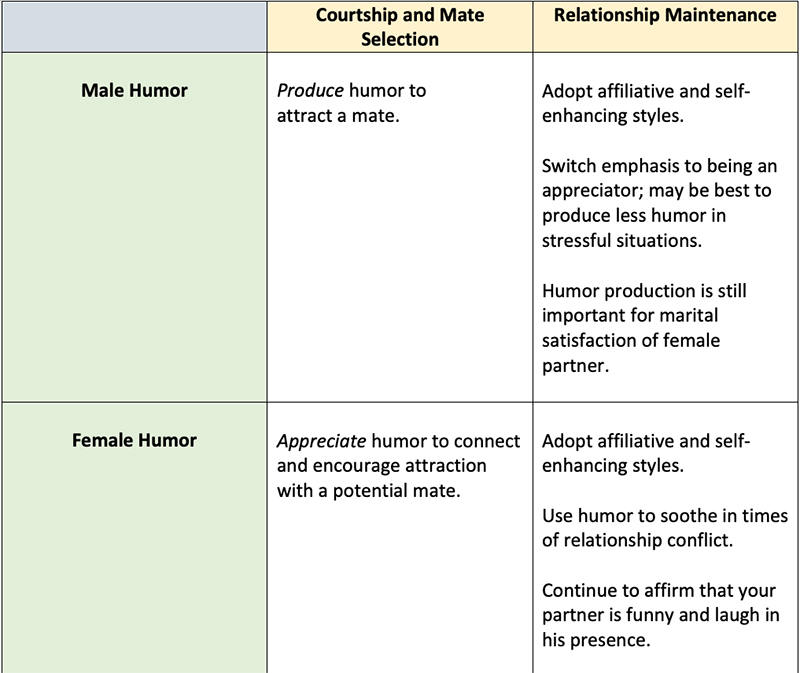
Turn Off the Brakes! Making the Most of Female Responsive Desire
Sexuality, Women’s Issues, Relationship Issues, and Tips for Couples
In her landmark book, Come As You Are, Emily Nagoski describes the central sexual response mechanism in the brains of men and women. There is a sexual excitation system (SES) or “accelerator” that is dominant in most males. The sexual excitation system often activates male sexual desire. It has a sense of urgency, eagerness, and passion – men pursue under its influence. Nagoski calls this “spontaneous” desire.
Foot Brake and Hand Brake
Females most often operate out of their sexual inhibition system. This system notices all potential threats in the environment and sends a signal from the brain to the genitals to “turn-off” for fear of consequences. Nagoski calls this the “foot brake.” But there is also a “hand brake” activated by the fear of performance or a combination of mental chatter, stressors, and self-consciousness. When the female sexual inhibition system is relatively quiet, women most often function from a state of responsive desire.
Responsive Desire Moves from Place of Neutrality
Responsive desire occurs when one is willing to engage in sex, although not initially feeling desire or sexual arousal. With sufficient sexual stimuli and an appropriate context, responsive desire allows a woman to move from a place of neutrality to being aroused and desirous of a sexual connection.
Responsive Desire Emerges from Pleasure
Some women may be taught (or just believe) that desire is supposed to “arrive” spontaneously, as it often does for men. Desire can arise in anticipation of pleasure, but Nagoski says responsive sexual desire emerges in response to pleasure. The key to making the most of responsive desire is to maximize pleasure.
Ten Ways to Maximize Responsive Desire
(Adapted from 10 Tips for Making the Most of Responsive Desire by Emily Nagoski)
1. Put pleasure at the center of your sexual well-being.
It is not important how much you “crave” sex, how often you have sex, or how many orgasms you have. For Nagoski, the only meaningful question is:
“How much do you like the sex you are having?”
“Because responsive desire emerges in response to pleasure, it functions best when you put pleasure at the center of your definition of sexual well-being,” says Nagoski. Pleasure is the measure of your sexual satisfaction.
Sensations Depend Upon the Context
Whether or not a sensation feels good depends upon the context. For instance, tickling: if you are in a playful and flirting state of mind, tickling from a specific someone might feel good and be fun – and lead to more things that feel good. But if that person tries to tickle you when you are angry at them, it will not feel good at all.
A Key Take-away
“Know which contexts allow your brain to interpret sensations as erotic.”
The best context typically has low stress, high affection, high trust, and explicit eroticism.
2. Evaluate your contexts.
Nagoski identifies five categories of context to assess both your best and your most lack-luster sexual experiences.
In her worksheets, she asks the reader to write down as many details as can be remembered about both experiences and identify the specific aspects of each context. What made the experience fantastic, or what caused the experience to suck? What made it good or bad in each of the five categories of context?
Five Categories of Context
1. Mental and Physical Well-being: physical health, body image, mood, anxiety, distractibility, and worry about sexual functioning.
2. Partner characteristics: physical appearance, physical health, smell, mental state of your partner (or the attributes of yourself at that moment if you are “your own partner.”)
3. Relationship characteristics: trust, power dynamic, emotional connection, feeling desired, and frequency of sex.
4. Setting: private/public; at home, work, or vacation; distance sex (phone chat); seeing your partner do something positive like interacting with family or doing work.
5. Other life circumstances: work-related stress, family-related stress, a holiday, anniversary, or “occasion;” self-guided fantasy, partner-guided fantasy (“talking dirty”), body parts that were touched or not; oral sex on you/on partner; intercourse, etc.
3. Assess your brakes and accelerator.
As described earlier, the sexual response mechanism in your brain has two parts: a sexual accelerator which notices all the sexually relevant stimulation, and sexual brakes, which detects potential threats or other reasons not to be turned on. For example, the accelerator notices sexy sounds, sights (very potent for men), and sensations in the “right” context.
Too Much Stimulation of the Brakes
The brakes notice that there is a risk of kids interrupting or worries about how your body looks. These brakes-hitting contextual factors are extremely important! When a woman struggles with sexual pleasure, it is more often because there is too much stimulation to the brakes!
Identify What Hits Your Brakes
Identifying the things that hit your brakes is an essential step in creating a context that allows you to experience pleasure – that lets desire emerge in response to that pleasure.
Review your positive and negative contexts and notice what aspects of the context seem likely to activate your accelerator. But most importantly, identify what aspects of the context seem likely to hit your brakes.
4. Make context appointments.
Make a concrete, specific plan to create a positive context for yourself and your partner. You are not setting an appointment to have sex; you are setting an appointment to spend some time together in that context. Decide what the context should be and whose responsibility it is to create various aspects of it.
No Secret Expectations
Set a time and date. Agree on what you will do. Neither partner must bring a secret expectation that these are actually “sex appointments” disguised as “connection appointments.” For responsive desire people, the fastest way to shut down pleasure and desire is to create a feeling of expectation or obligation.
5. Identify and engage in “windows of willingness.”
Related to context appointments, identify times when you are open to a certain level of affection like kissing, hugging, sitting side-by-side, or holding hands. These are your “windows of willingness” – times when you might perceive the world as safe, trustworthy, and affectionate.
Gradations of Sensual – Sexual Behaviors
Nagoski gives a list of things you might be willing to do inside the window – from hugging to kissing or touching from the waist up to various forms of genital touching. Each partner may have a separate list of what they are willing to do or receive during this window. There must be a congruence and a match of preferences.
Consent Can Be Sexy
A clarity of verbal consent characterizes the “willingness” window. The willingness-consent conversation can be erotic by itself and help create a good context. Asking permission and granting permission can be pretty sexy!
Learn How You Respond to Different Contexts
Decide how frequent (and how long) the window will be: three times a day, once a day, three times a week, once a week, once a month, etc. Nagoski suggests that a couple experiment with windows of willingness for a week, a month, or however long it takes for them to learn how their bodies respond to different contexts. Notice what works and what doesn’t work. Adjust your windows as you go, looking for more and more pleasurable contexts.
6. Make out like teenagers!
Relationship researcher John Gottman recommends that couples share a daily six-second kiss. Six seconds. This kiss is dramatically different from the typical “bye, see you tonight” kiss.
Six Seconds Is Long Enough to Have Impact
Six seconds is too long, says Nagoski, to kiss someone you resent or dislike. It is far too long to kiss someone with whom you feel unsafe. “Kissing for sex seconds requires that you stop and notice that you like this person, that you trust them, and that you feel affection for them.” (If you do not like or trust your partner, then responsive desire is not the difficulty you are dealing with in your sex life.)
Oh, To Be Teenagers Again
What if you shared a six-minute kiss every day? What if you spent six minutes with your hands and mouth on your partner, with the mutual agreement that kissing is all that you would do? This physical connection is not a preamble to sex. It is just a few minutes of reminding yourself that affectionate touch feels good. Remember, pleasure is the measure of sexual well-being. Perhaps early in your sexual development, you made out for minutes or even hours before having any genital contact. As teenagers or young adults, we noticed the pleasure of that kind of touching.
7. Make some things off-limits.
Going along with “windows of willingness,” couples often benefit from taking away the pressure to “perform” by making certain things against the “rules.” For example, if you worry that intercourse will be expected if you begin kissing and hugging, make a rule that intercourse is entirely off the table for a week, a month, three months, or just for that day.
It is worth noting that making things off-limits can heighten anticipation and eventual pleasure. That kind of “teasing” can be very juicy sex-play!
8. Raise your heart rate together or go “deeper” emotionally.
Most of the sex advice in pop culture is about novelty – try new positions, new techniques, new toys, new porn, or even new partners. There is no disputing the value of novelty for triggering desire, especially for women.* (Men are especially wired for the novelty of new partners.) When the brain is exposed to a stimulus for the first time, it will react more intensely than it does to stimulation that it is accustomed to.
Novel Strategies
But novelty doesn’t have to involve new toys and techniques. Here are two strategies that can generate novelty. (Granted, these may be new behaviors.)
Strategy 1: Do anything that raises your heart rate. Exercise together. Watch an exciting or scary movie. Go to big concerts or political rallies. Do anything that gets your heart pounding. Take long, fast hikes. Ride a rollercoaster together. Your brain will notice your level of excitement, see the person you are with and decide, “Hey, I guess this person is really exciting!” (These methods increase the accelerator more than decrease the brakes.)
Strategy 2: Go deeper emotionally into your relationship. Dare to be vulnerable. Keep the lights on. Keep your eyes open. Disclose more. This kind of emotional “novelty” may enhance your pleasure and desire.
9. Face the “The Wall” together.
When couples are stuck around sexual desire, they may experience what Nagoski calls “The Wall.” This is the feeling you get when you have considered arranging appointments or “windows of willingness,” and something inside you just withdraws. You do not feel curiosity, hope, or even neutrality. Instead, you feel dread or resentment.
Turn Toward “The Wall” with Curiosity
Nagoski recommends a kind of “gestalt conversation” with “The Wall.” Turn toward it (as John Gottman might say), lean into it, and ask what it is trying to protect you from. What does it need? To face the wall requires an attitude of patience and curiosity. Nagoski suggests that The Wall will gradually tell you what it needs. Don’t try to bash it down before you are ready. Stick with levels of intimacy that feel safe or just a tiny bit too risky. Be gentle and kind with each other.
10. Go to a “party” of your choosing.
Sex therapist Christine Hyde suggests (as an analogy) that you think about a party invitation you receive from a good friend. You might think of ten reasons not to go (what a hassle!), but you go anyway because a good friend asked. You get to the party and then, (surprise, surprise) you have a good time!
Create a Party that You Will Enjoy
Don’t ask yourself, “how can I make myself go to more parties?” The question to ask is: “What kind of parties do I enjoy attending?” There is no right or wrong kind of party. There is just the kind of social experience that is right for you. So,
What kind of sex is worth having for you?
What kind of sex is worth setting aside all of your duties and distractions? When you answer that question, your foot and hand will come off the brakes. Responsive desire will be free to roam “about the cabin.”
Conclusion and Summary
- Responsive desire emerges in response to pleasure. Spontaneous desire emerges in anticipation of pleasure. Both are normal.
- Put pleasure at the center of your definition of sexual well-being, and allow desire to emerge from pleasure.
- Sexual pleasure, especially for women, is context-dependent. Sensations only feel pleasurable and give rise to desire in a sex-positive context; for most people, that means low stress, high affection, high trust, and explicitly erotic.
- Most difficulties with pleasure and desire are related to too much “braking” rather than not enough “accelerating.”
- Couples who maintain strong sexual connections over multiple decades share two traits: 1) they have a strong friendship at the foundation of their relationship, and 2) they prioritize sex. They decide that it is essential for the relationship to spend some alone time together, skin to skin, connected in an intimate, personal, and playful way.
Related Posts
Spontaneous and Response Desire — the Underbelly of Heterosexual Mating
Is Your Sexual Foot On the Accelerator or Brake?
Note
*My next post (April 13) will explain why women are sexually “bored.”
Please Note: Your comment may take up to 12 seconds to register and the confirmation message will appear above the “Submit a Comment” text.


